
Launching A Digital Solution to Coordinate Drone Flights for Disaster Response
WeRobotics, Nepal Flying Labs, and NAXA run a virtual workshop on the use of digital systems for UAV registrations and flight operations.
December 8th, 2020
In October 2020, the Nepalese UAV industry witnessed a first of its kind event related to UAV regulations, policy discussions, and exploring the digitization of UAV authorization processes. Nepal Flying Labs organized a workshop driven by the increasing need to coordinate drone operations swiftly, for instance, in response to natural disasters, and present a newly developed mobile platform to expedite drone flight permissions.
After the devastating earthquakes of 2015, an unprecedented number of small-and-lightweight drones were flown for purposes ranging from search and rescue to mapping affected areas. Nepal's government quickly put in place Drone Regulations 1.0, then replaced by the UAV Flight Regulations of 2019. The UAV registration and flight authorization in Nepal and many other countries where Flying Labs operate are manual, requiring individuals and organizations to visit multiple offices. Therefore, it makes it challenging in disaster response scenarios where there is also a lack of coordination and accountability amongst responders.
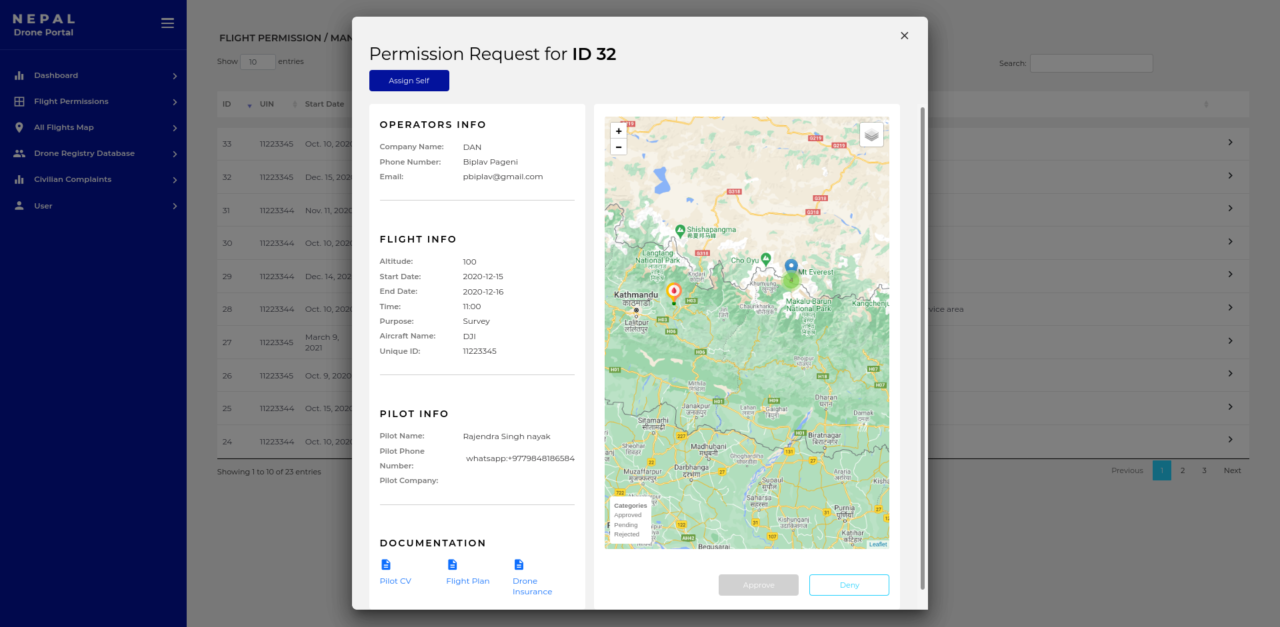
WeRobotics received a grant from Twilio.org to develop a dedicated SMS messaging platform to register drone pilots and approve flight permissions quickly, significantly reducing the risk of drone collisions while improving coordination and accelerating response efforts. The number of drones registered in Nepal has already surpassed the number of registered crewed aircraft, making this a timely event for the Civil Aviation Authority of Nepal and all other national entities involved in the UAV registration and flight authorization process.
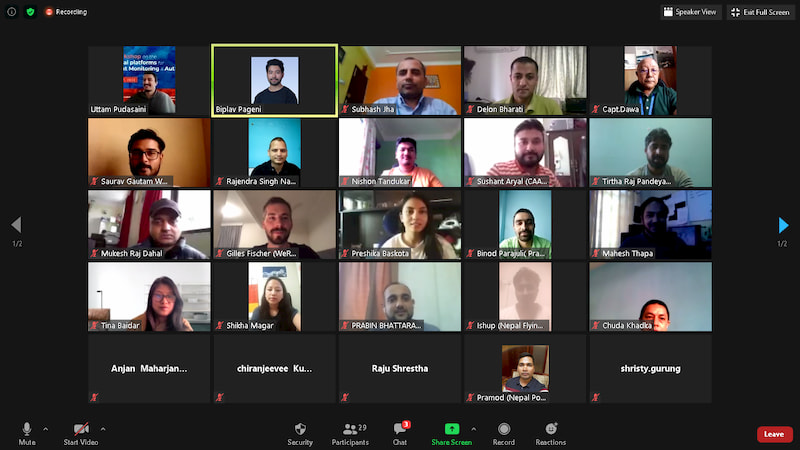
In this context, WeRobotics and Nepal Flying Labs teamed up with the Nepali social enterprise, NAXA, to run a 3-day virtual workshop to bring together national and international stakeholders. The workshop was aimed at learning from international practices regarding the use of digital systems for UAV registrations and flight operations, understanding the International Civil Aviation Authorities' vision, and discussing the potential and functionalities of the WeFly Portal among all drone-related government stakeholders of Nepal. This portal prototype developed by Nepal Flying Labs and NAXA with support from WeRobotics and Twilio aims to move from paper and lengthy flight permission approvals to a rapid authorization process taking place digitally. The idea behind this will greatly help different authorities coordinate permission approvals, especially for contexts such as disaster response, which are time-critical and where many pilots may apply for permissions at once and fly at the same time in close locations.

The prototype developed by Nepal Flying Labs (working with WeRobotics) consists of:
- A WhatsApp interactive bot for:
- Pilots to request flight permissions and quickly submit details from their phone in a user-friendly way; and
- The public to raise complaints or inquiries about drone flights.
- A website with public information on registering a UAV in Nepal, including the rules, regulations, contact of authorities, and more. The site also includes a secure web platform for relevant authorities to review:
- Flight permission and extension requests, pilot information, geolocation, flight and flight plans;
- Complaints or inquiries raised by the public; and
- A view of nearby flights.
Over 45 national and international stakeholders from 9 countries participated in this virtual workshop featuring ICAO (the International Civil Aviation Organization) and Nepalese Government entities such as the Ministry of Home Affairs (MoHA), the Ministry of Communication and Information Technology (MoCIT), the Civil Aviation Authority of Nepal (CAAN), Nepal Police Communication Directorate, the Department of Survey, Changunarayan Municipality along with the World Food Program Nepal and other Civil Society organizations.
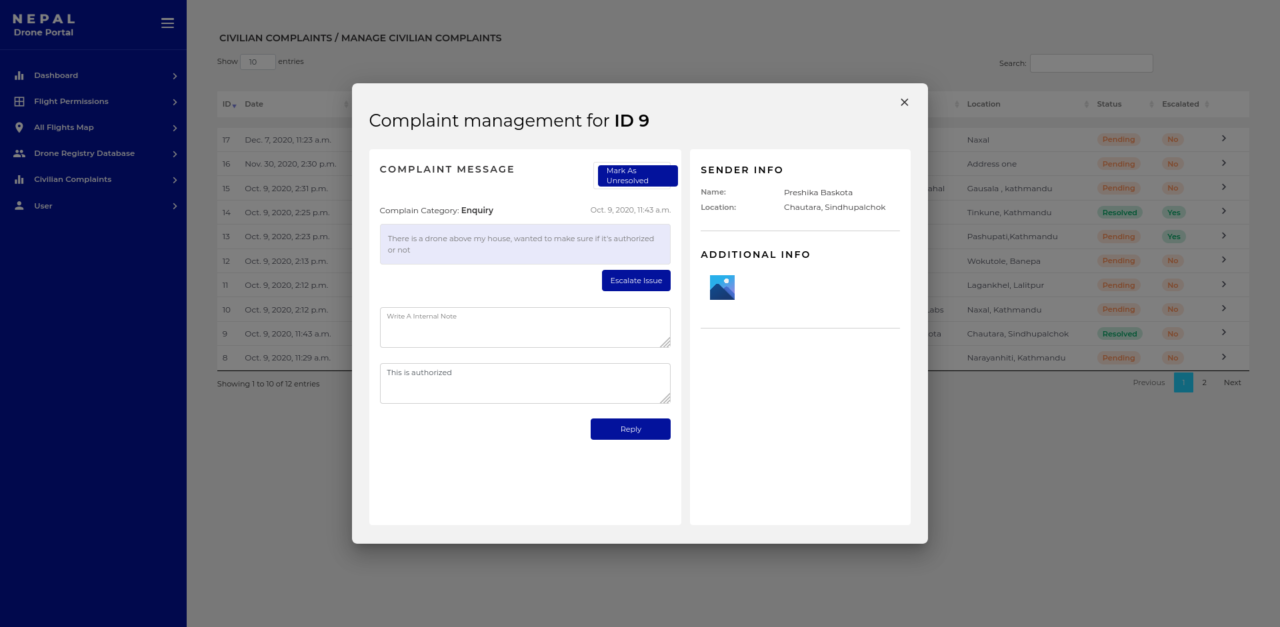
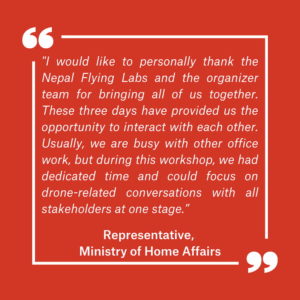 The workshop took place over three days mixing presentations from national and international stakeholders, Q&A, discussions on best practices, a review of the rules and regulations in Nepal and across the globe, and hands-on group sessions, including user testing the developed prototype.
The workshop took place over three days mixing presentations from national and international stakeholders, Q&A, discussions on best practices, a review of the rules and regulations in Nepal and across the globe, and hands-on group sessions, including user testing the developed prototype.
After the workshop’s official opening, ICAO shared their vision and current programs regarding the UAV related regulatory framework. This talk was the highlight of the first day because the Nepalese authorities were there to learn about ICAO’s plans in managing the UAV industry. Following this, all drone stakeholders from Nepal (CAAN, MoHA, Nepal Police, and MoCIT) shared about the existing practices of handling drone permission requests within their department/office, current regulations, and their concerns and challenges about documentation and database management. Likewise, the CAA Nepal also highlighted the new detailed regulation they are currently preparing as per ICAOs’ model regulation to make the drone flight permissions and monitoring process more efficient. Colleagues from Peru Flying Labs and India Flying Labs also contributed to various use cases and regulations.
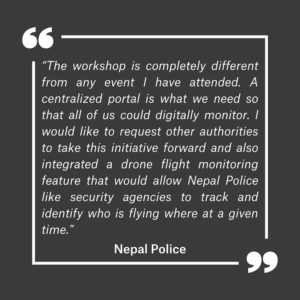 During the second day, Nepal Police and representatives from local governments shared the parameters they looked after while responding to drone permission requests at the local level and highlighted the gap in federal officials identifying those decisions made by local jurisdictions across the country. For the practical Design Thinking session, participants were divided into four teams: Team Aviation, Team Authority, Team Local Authority, and Team Frequency—where each team first designed their process flow, outlined the major challenges and pain points and presented the conclusions to the entire group. Combined with the first day, this session helped all participants learn about current processes and challenges at each government department. Additional speakers presented on UAV applications in Rwanda, Kenya, Ethiopia, Australia, and Nigeria.
During the second day, Nepal Police and representatives from local governments shared the parameters they looked after while responding to drone permission requests at the local level and highlighted the gap in federal officials identifying those decisions made by local jurisdictions across the country. For the practical Design Thinking session, participants were divided into four teams: Team Aviation, Team Authority, Team Local Authority, and Team Frequency—where each team first designed their process flow, outlined the major challenges and pain points and presented the conclusions to the entire group. Combined with the first day, this session helped all participants learn about current processes and challenges at each government department. Additional speakers presented on UAV applications in Rwanda, Kenya, Ethiopia, Australia, and Nigeria.
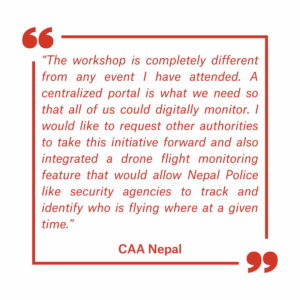 Building upon previous sessions’ learnings, the third day delved into user testing of the WeFly Portal, with teams divided into four groups for the exercise’s purpose. The pilot team was asked to rapidly respond to a disaster scenario by requesting UAV flight permissions to perform assessments. At the same time, the citizen group filed complaints about random UAV flights via WhatsApp. With that, both authority teams had to respond to the applications and complaints using the web-based application. During a participatory, interactive session, the teams shared what they liked and their suggestions for improving the platform as per Nepal’s specific context. The local authorities acknowledged the efforts to develop the prototype and are looking forward to further collaboration to scale it up. A policy recommendation document was drafted from this workshop and provided to the participants and the government's representatives for future recommendations.
Building upon previous sessions’ learnings, the third day delved into user testing of the WeFly Portal, with teams divided into four groups for the exercise’s purpose. The pilot team was asked to rapidly respond to a disaster scenario by requesting UAV flight permissions to perform assessments. At the same time, the citizen group filed complaints about random UAV flights via WhatsApp. With that, both authority teams had to respond to the applications and complaints using the web-based application. During a participatory, interactive session, the teams shared what they liked and their suggestions for improving the platform as per Nepal’s specific context. The local authorities acknowledged the efforts to develop the prototype and are looking forward to further collaboration to scale it up. A policy recommendation document was drafted from this workshop and provided to the participants and the government's representatives for future recommendations.
In conclusion, this virtual workshop has made all authorities realize the importance of having a digital system to integrate all the drone activities to better monitor UAVs in Nepal. Moreover, this digital application development will help streamline drone registration and flight monitoring for UAV operators and the authorities.
Process Diagram from UAV registration to obtain flight permission in Nepal:
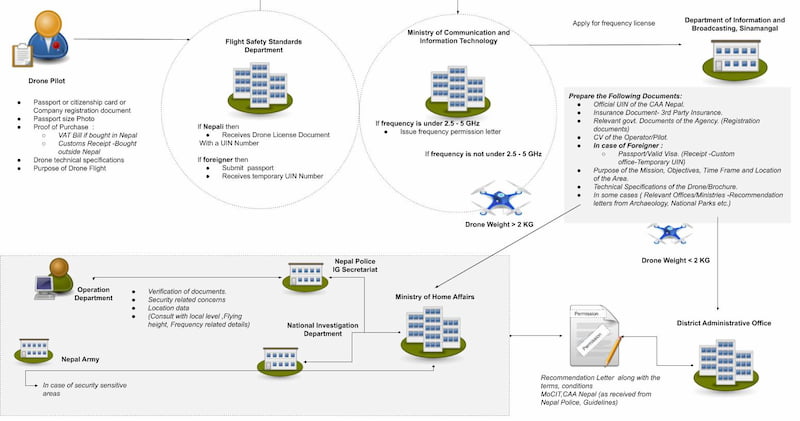
Word Clouds from the participants generated over two days about the workshop and the prototype:

Location(s)
Recent Articles
View All »

Wildfire Assessment and Web Application in Sao Paulo
